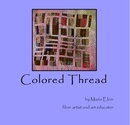So here's a quiz.......... What do the following images have in common? Giorgio Morandi Still Life 1960
Giorgio Morandi Still Life 1960
 Tulle painting by Irfan Onurmen (sorry-don't know the title)
Tulle painting by Irfan Onurmen (sorry-don't know the title)
 Georgia O'Keefe's Two Calla Lilies on Pink
Georgia O'Keefe's Two Calla Lilies on Pink
 Giorgio Morandi Still Life 1960
Giorgio Morandi Still Life 1960 Tulle painting by Irfan Onurmen (sorry-don't know the title)
Tulle painting by Irfan Onurmen (sorry-don't know the title) Georgia O'Keefe's Two Calla Lilies on Pink
Georgia O'Keefe's Two Calla Lilies on PinkGive up? All 4 images have a calm, subdued, neutral color harmony, and I'm willing to bet that most of those neutral tones were created through mixing complementary colors. Complementary colors are opposite each other on the color wheel, and if used in equal quantities at their brightest chroma can be quite jarring to the eye. However, when they are mixed together they can create really beautiful neutral tones, more interesting than grays mixed from black and white. All those neutral areas in the paintings make those few moments of brighter color really sing.
This week's color theory class was all about complementary mixing. We made gradations across complements and then created value scales for each mixture in the gradation. By creating a mixing grid first, students already had all the necessary colors out to create a complementary color harmony still-life painting. I liked how this allowed them to spend more time in the right-brain painting phase instead of constantly switching to left-brain mixing phase. I have Betty Edwards' Color book to thank for this idea about right-brain vs left-brain artmaking.





No comments:
Post a Comment